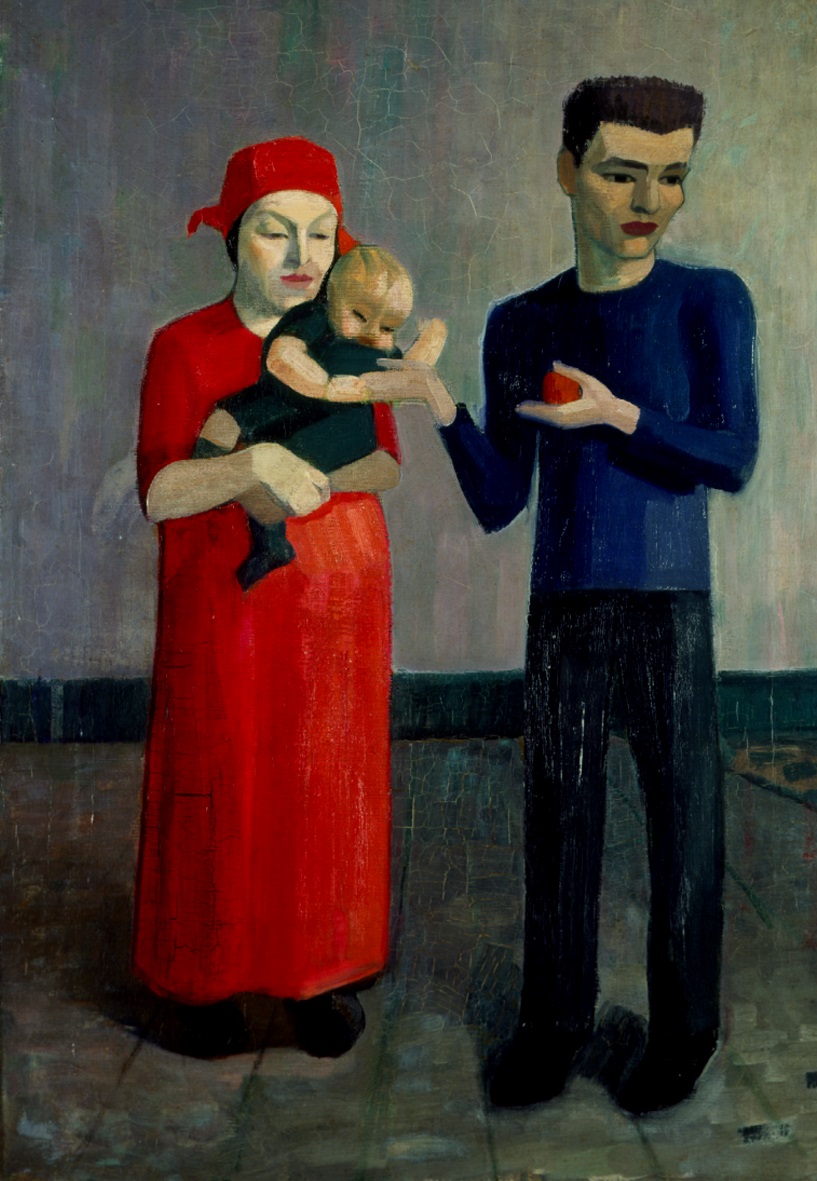
© Southampton City Art Gallery
by Mark Gertler
1913, Oil on Canvas, 92 x 61cm/ 36 x 24 inches
Begun in July 1913, but possibly not completed until the autumn, the composition depicts the artist’s eldest brother, Harry, his wife, Anne, and their baby daughter, Irene (known as Renée), dressed as peasants in startling primary colours, set against the bare floorboards of Gertler’s studio. The baby at the centre of the group focuses attention on the joining of the figures, their arms linked in an unbroken chain. The positioning of the adults is reminiscent of the betrothed couple in Van Eyck’s Arnolfini Marriage, but the angular forms suggest the influence of Picasso and Cubism, as well as a more expressionistic style employing blocks of colour, which has also been linked to folk-art. With the simplification of form, the artist also introduces a bold surge of colour to his formerly low-toned palette. These planes of colour are juxtaposed with minimal texture and flat application to vibrant visual effect.
An X-radiograph and infrared images reveal changes in the composition made by the artist as his conception of the painting evolved; most significantly, a full-length painting of a young girl in profile (to the right of the figure of Anne), later painted out in the final stages of the composition. The technical images and surface observations suggest that the girl had been fully painted. The paint of the background covering her flesh and the bodice of her dress is pockmarked with metal soap efflorescence, documented in surface micrographs. Her flesh is present beneath the background overpaint and her hair has been painted using iron oxide pigments (characterised by XRF). She was dressed in blue, visible beneath the red lake and vermilion of Anne’s dress through wide drying cracks in the upper red paint layers. Tantalisingly, the identity of the girl remains unknown.
There are further, more minor changes in the composition, visible in X-ray and IR including Anne’s headscarf – originally spotted and now plain red with a tail (also in red) added over the background – a change probably intended to simplify and strengthen the image. The position of Harry’s hairline and shoulder have been adjusted and his left eye was also originally lower. In addition, there is a large round entity in the lower right corner and indications of a cloth – elements that may have been part of a still life in an earlier use of the canvas. This is evidence for reuse of the canvas support for the current composition, that appears to be characteristic for this artist, and a grid-like pattern beneath the paint of Harry’s top – visible in the X-ray – could be part of an earlier painting scheme. The painted internal black border, common in Gertler’s work in this period, is perhaps intended as a faux frame, at a time when the artist had little money.
By Lewis Brown
Aviva Burnstock, The Courtauld Institute of Art and Sarah MacDougall, Ben Uri Gallery and Museum
The authors would like to thank Clare Mitchell (Curator) and Rebecca Moisan (Conservator) and Southampton City Art Gallery for permission to reproduce Family Group
